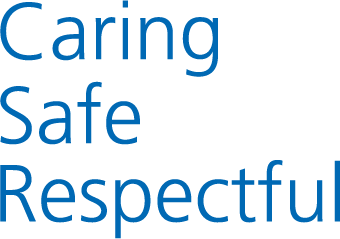What is Heart Failure?
It is the inability of the heart to provide a good blood supply to the tissues and organs of the body. It does not mean that your heart has stopped working or that you are having a heart attack. The term might sound frightening so maybe think of it as: ‘My heart is not functioning as well as it should and requires treatment to support how it works’.
The most common symptoms of Heart Failure:
• Shortness of breath when at rest or exertion.
• Swelling of feet, ankles, legs, abdomen or lower back.
• Fatigue (feeling unusually tired and weak).
Other symptoms may include:
• Memory/concentration problems.
• Poor sleep pattern.
• Feeling helpless or fed-up.
• Weight problems Fatigue Management
What is fatigue?
Fatigue is a common symptom of heart failure. For most people, fatigue usually subsides within a few weeks, but for some people can persist longer. Fatigue is often felt to be both physical and mental tiredness and is said to be overwhelming:
• A feeling of having no energy, like you could spend the whole day in bed.
• Feeling breathless after only light activity.
• Difficulty sleeping.
• Feeling more emotional than normal.
• Having trouble thinking or making decisions.
The feeling of fatigue is often exacerbated by activity and can sometimes develop the following day, taking several days to improve.
Planning, pacing and prioritising activities.
Fatigue Management
• Managing daily activity / lifestyle management, pacing
• Sleep management/hygiene
• Rest and relaxation, lowering heart rate
• Diet and nutrition and stable food intake
• Stress/anxiety management
• Changing cognition such as thinking, reasoning, or remembering
• Expectations and beliefs
• Memory and concentration strategies ~
• Relapse prevention / management
• Symptom control
• Environmental adaptation
Why is activity important?
• Activity regulates the human body.
• Human beings are occupationally driven.
• Lack of occupation and purpose will influence psychological wellbeing, e.g. mood, confidence, anxiety, etc.
• The pattern of boom and crash or stuck in the mud.
• We can all influence our daily activity levels, e.g. it is possible to make yourself worse.
The aim of energy conservation is to improve your quality of life, by conserving your energy for the activities you “like to do” as well as those you “have to do”, within a safe and well structured environment.
- Sit rather than stand when completing tasks
- Listen to your body – rest before you feel exhausted
- Keep frequently used items in easy reach
- Allow time to complete an activity without rushing
- Use adaptive equipment to save energy.
Grading activity involves looking at the things we do in every-day life and breaking them down into achievable steps.
Grading activity is important in relation to fatigue because:
• During the recovery phase, you can have a limited supply of energy to serve the body’s needs
• The level of fatigue can vary and is worsened by high levels of physical and mental exertion or activity
• Every task we undertake from getting out of bed each morning to undressing for bed at night requires energy, it is a simple question of ‘supply and demand’.
The Human Battery People often associate the concept of energy with batteries and describe that having fatigue makes them feel like they have an empty battery, reporting that even on the ‘good’ days their energy levels are still significantly lower than prior to their episode of illness.
Pacing and grading activity rations energy and uses it to best effect. The intention is to avoid flattening the battery and allow opportunities for energy levels to rise. Pacing uses smaller amounts of energy at one time and spreads the total energy used out over longer periods.
Managing breathlessness
One of the most common symptoms you may experience is breathlessness. This may occur during every day activities like getting dressed. This is nothing to worry about and there are various tips and techniques you can use to help manage your shortness of breath.
The following positions support the muscles in the body that help us with breathing.
- Try to relax your hands, wrists, shoulders, neck and jaw as much as possible.
- Make sure you are fully over on your side.
- Resting your upper arm on a pillow may also help.
- Relax down onto the pillows as much as possible. Having your legs apart may also help.
- Experiment with your arm position – find what is comfortable with you.
- When sitting, sit upright, have your legs uncrossed and keep you head up. Leaning forward will also help.
• The aim is to move from fast, upper chest breathing to relaxed, slow tummy breathing.
• Take slower breaths, in through your nose down into your tummy, then gently breathe out through pursed lips (as if you were going to blow out a candle) to create more room for the next breath in. Do not force your lungs to empty.
• You may find it helpful to rest your hand on your tummy as you do this, feel it rise and fall gently with each breath
• Remember 3 Rs: Rise the tummy as you breathe in, Relax the breath out, Rest and wait for the next breath to come.
• Follow the sides of the rectangle with your eyes as you breathe in (nose) and out (pursed lips).
• Gradually slow the speed your eyes move around the edge of the shape to slow your breathing.
Pursed lip breathing might also help when you feel breathless – breathe in slowly through your nose, then exhale through your mouth with your lips in a ‘pursed’ position – like you are about to blow candles out on a cake, for as long as comfortable.
Scale of breathlessness:
Below shows the Modified Borg Scale of Perceived Exertion which can help you to monitor the difficulty of your breathing and how hard your lungs are working when you exercise. You can use this to track your progress.
- 0 Nothing at all
- 0.5 Very, very slight (just noticeable)
- 1 Very slight
- 2 Slight
- 3 Moderate
- 4 Somewhat severe
- 5 Severe
- 6
- 7 Very severe
- 8
- 9 Very, very severe (almost maximal)
- 10 Maximal.
When exercising you should aim for level 3.
The importance of goal setting
Setting goals that are realistic can help you to stay positive and provide a sense of achievement. These goals can be physical and/or mental. They should be achievable and will help to track your progress in your recovery.
Examples:
• Transfer from bed to chair
• March on the spot
• Mobilise around the bed space
• Wash myself independently
• Walk to the bathroom
• Mobilise unaided.
It may be beneficial to continue to set goals when you are at home. These could be based upon activities of daily living (ADLs), for example to make a hot meal, or complete a domestic task.
Nutrition
A good nutritional intake is important to help you manage your Heart failure. Having a balanced diet that meets your nutritional needs will give you the energy and strength you need, this will help you feel better and improve your quality of life by:
• Maintaining a healthy weight
• Controlling your symptoms
• Feeling more energetic
Aim for 3 balanced meals a day, with healthy snacks if hungry. Smaller regular meals may help if you have poor appetite or bloating.
Fruit and vegetables are a good source of vitamins, minerals and fibre. They will help to support your immune system. Aim for 5 portions of fruit and vegetables each day and choose items that are a variety of different colours, to make sure you get a range of different vitamins and minerals. You can choose fresh, tinned, frozen or dried fruit and vegetables, they all count towards your 5 a day.
Starchy foods such as bread, rice, potatoes, cereals and pasta are a good source of energy. They provide energy, fibre, calcium and B vitamins. Unless you have been advised to have a low-fibre diet, then choosing wholemeal versions of these foods will increase your intake of fibre which, along with drinking the recommended amounts of fluids as advised by your heart team.
These foods are an important part of a balanced diet, particularly if you have been unwell. They provide energy, vitamins and minerals and play an important role in improving muscle function and wound healing. Foods such as meat, fish, pulses and meat alternatives such as soya protein are included in this group.
Milk, cheese, yogurts and fromage frais are a good source of, energy, vitamins and calcium.
You may have lost weight whilst you have been unwell, or be continuing to do so or have a poor appetite. It is common for people to lose weight during periods of illness. You may also find your appetite has reduced or you cannot manage the same portion sizes as before. The sections below provide advice about fortifying your diet. Please contact your GP or dietitian if you are struggling to eat or with your weight for more advice.
• Try to include a portion of meat, fish, beans, soya protein or cheese at each meal.
• Include higher protein snacks between meals or desserts such as milky puddings, yogurts, custards, cheese or nuts
• Use a high protein food ‘topper’ on your meals such as; - Sprinkle cheese on baked beans or potatoes - Add crushed nuts to porridge, cereals or desserts - Add some high protein yogurt to cereals or fruit
• Use ‘fortified milk’ in your cooking, on cereals and in your drinks. To make fortified milk; add 4 heaped tablespoons of skimmed milk powder to a small amount of milk and mix to a paste then whisk into a pint of milk.
• Include milky drinks between your meals such as making your coffee with warm fortified milk rather than water
Eating can be more difficult when you are short of breath.
• Eat smaller portions of meals and include snacks frequently between meals.
• Choose softer, moist foods that are easier to chew and swallow
• Add extra gravy or sauce to meals whilst remaining aware of salt and fluid intake.
• Take your time with meals. • Prepare meals in advance in bulk if possible to allow time to rest after making meals before eating.
• Try to plan your meals for the times of the day you are less breathless.
• Sit upright when eating try to avoid slouching or lying down whilst eating.
You need salt to balance out the water in the body. Most of us eat more salt than needed. A diet high in salt can lead to fluid retention causing sudden weight gain and breathlessness. A diet high in salt can also lead to high blood pressure. Eating less salt can reduce the amount of water your body holds on to.
Limit foods high in salt these include:
• Processed meats, sausages, bacon, pies, burgers.
• Tinned meats like spam, corned beef or chopped pork.
• Crisps and salted snacks.
• Salted butter/margarine.
• Prepacked meals. Tips for reducing salt content:
• Don’t add additional salt to meals
• Use herbs and spices instead of salt to flavour food.
• Avoid canned foods in brine, choose water instead.
• Read the labels; wherever possible choose foods with a green label for salt.
Psychological wellbeing
We all deal with stress/anxiety from time to time. You may experience difficulties collecting thoughts and may experience a range of emotions about your heart condition which could include:
• Being anxious or worried, fearful, angry, depressed or low in mood
• Physical difficulties such as physical changes common to anxiety and stress:
- Shaking and trembling
- Tension and muscular aches
- Sleep disturbance
- Tiredness
- Lack of energy - Poor concentration or forgetfulness
- Palpitations
- Shallow or rapid breathing
- Dizziness
- Feeling nauseous, vomiting or diarrhoea.
• Listen to some music
• Sharing time with family
• Having a warm bath
• Sitting in your garden/fresh air
• Stroking your cat or dog.
• Practice breathing techniques/meditation/yoga
• Try to remain active
• Avoid unhealthy habits eg, alcohol, smoking, caffeine.
• Having ‘ME’ time
• Join a support group
• Try stress busting apps – visit the website: apps.beta.nhs.net
All these apps have been approved and tested by the NHS. Emotional and physical changes might be new and unpleasant, but could be normal responses to the significant stress and shock, having been through a significant or life threatening situation. There are no rights or wrongs here, everyone is different. Most people after these traumatic events will be shaken, but most over time emerge emotionally unscathed. All reactions are individual and not everyone experiences feelings that are described here. The important thing is to acknowledge that you have been through a difficult time and experiencing any emotional responses to this is normal. Try to respond kindly and compassionately to yourself, noticing your frustration, disappointment and allowing time to come to terms with what you have been through.
Talking about your worries:
Talking to others can help you to come to terms with the experiences you have had, but sometimes there are restrictions on how you might be able to do this face to face. There are resources available and access to talk to others who might understand some of how you are feeling, although your experience is unique to you and your circumstances and you should not judge your recovery against others. Talk to your family, friends and your usual social support network, but if this is not available or you prefer to talk to someone outside of your circle, there are services available which are listed at the end.
Taking care of yourself:
Resilience:
Think about specific challenges you have faced in the past – how do these experiences help in this situation?
• Consider useful advice you received from others
• Who was supportive or helpful at the time
• What did you say to yourself • Could anything you did to help you cope in the past be helpful now
• What did you learn about how to cope with challenges
• How did you get through it • What did you do that was most helpful
• What did you do to be compassionate with yourself
Anxiety:
Feelings of tension and anxiety are normal experiences following difficult or life threatening experiences. Anxiety can make you experience physical feelings which may be new to you, including
• Fluttering chest – palpitations
• Racing heartbeat
• Breathlessness
• “Butterflies” in stomach
• Shaking
• Feeling more sensitive to surroundings These feelings are not dangerous and will pass. They are the body’s automatic response to physical danger so we are ready to fight, run or freeze. This is ideal if there are physical dangers around, but not if the trigger is worries or memories of difficult situations.
Keep a diary, it might help when anxious or having a panic attack. This could help spot patterns in what triggers these experiences, or to notice early signs that they are beginning to happen.
Mindfulness and relaxation:
Can help reduce physical symptoms of anxiety and the intensity of our thoughts. Regular practice is necessary to experience the full benefits of the strategies. It is normal to have experiences of worry or stress. Dwelling on what might have been or what might happen in the future can be a natural response, but not necessarily very useful or helpful.
Where possible try to focus on what is in your control. What you can do and what you are able to achieve. The more we worry about thoughts and feelings we are having the worse they are likely to get.
Breathing exercises can help you cope and feel in control. “Breathe…. always remember to breathe. Take time to inhale. It’s the simplest thing but is forgotten in a panic attack”.
What treatments are available?
There are various evidence-based treatments found to help with anxiety.
• Self help resources, eg, workbooks and online CBT programmes.
• Medications, your GP can discuss options with you.
• Psychology input. See the national Institute for Health and Care Excellence (NICE) guidelines for treating anxiety disorders for more detailed information.
Relaxation
Relaxation can help to control your breathing, improve pain, sleep problems and any stress or anxiety you may have.
There are various techniques you can use that when built into your rest periods can help you to manage your recovery.
Breathlessness can make us feel anxious, which in turn can add to our breathlessness. The following relaxation exercises can help: • Visualise a relaxing scene, such as a favourite place, a walk, a garden, the beach or somewhere from your imagination that makes your feel happy and secure (not places that evoke bad or sad memories).
Imagine what you can see, hear, feel and smell.
• Body scan: Scan your body from head to toe, trying to release any tension in your muscles.
• Let go of thoughts: Imagine you are sitting on a riverbank watching leaves drifting downstream. When a thought or feeling comes into your mind, try to see this as a leaf and let it drift away from you, and disappear.
• Velindre App: This is a free App to download, use the relaxation exercises section. • Relaxed Melodies App: This is a free App where you can choose your favourite relaxing sounds.
Sleep hygiene
We can all have a bad night’s sleep. This is very common. When it goes on for over two weeks, it can become a sleep problem. You may not have enough sleep, or the quality of your sleep is poor.
You may:
• Lie awake and not be able to fall asleep
• Not be able to stay asleep
• Breathlessness at night/lying flat/waking gasping.
• Wake up during the night for different reasons.
• Not feel refreshed when you wake up
• Sleep too much
• Your health conditions that may affect your sleep.
• Many things might be going on that affect your sleep. You may have got into some habits that are not good for sleep.
Things that are known to make sleep worse:
• Napping in the day
• Watching TV in bed or using electrical devices, eg, laptop, phone.
• Drinking too much caffeine, consider how many each day and what time of day.
• Drinking alcohol
• Eating a heavy meal less than 3 hours before bed
Things that improve sleep
• Regular exercise
• Relaxation exercises, eg, relaxed breathing techniques.
• Sticking to a bedtime routine, teaches your body when its time to go to sleep.
• Sleep only at nightime, try to avoid daytime naps.
• Setting conditions for sleep.
• Make sure the bedroom is completely dark.
• Make sure the pillow/mattress is comfortable.
• Make sure the bedroom is the correct temperature, ensure the room has been well ventilated during the day.
Try keeping a sleep diary if symptoms persist. Or furthermore, seek GP advice.



